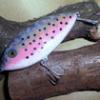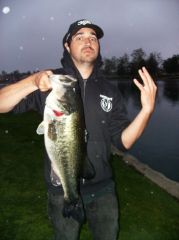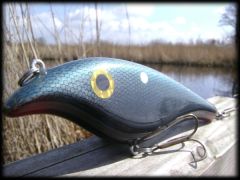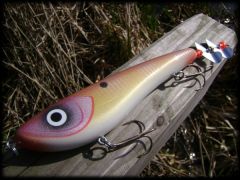-
Posts
3,867 -
Joined
-
Last visited
-
Days Won
23
Content Type
Profiles
Articles
TU Classifieds
Glossary
Website Links
Forums
Gallery
Store
Everything posted by diemai
-
Update : Had another idea about a solid brass hinge pin , not a tubing pin with riveted ends like previously shown . Put it to practise today , but the most important part is never done . Requires some more saw cutting and filing , but would render any riveting of solid brass rod uneccessary . Check top hinge , I have left some "lids" standing on either end of the hinge sleeves , still have to file their connecting ridge just a fraction thinner as I did so far with a small triangular file , so that I can straighten them out plane and bend them over the sleeve ends to close them and permanently lock the pin inside of the sleeves . My plan on further procedure is to bend one lid close , work it flush to the sleeve diameter and bend it open again afterwards , this way I could use a nail from the other(still) open end to push it open , if neccessary . This stainless steel sheet is rigid enough to withstand quite a bit of back and forth bending without tearing and I'd only do it once , anyway . When this is done , I would do the same to the second lid , but leave that one closed , so later doing the final assembly of the painted and topcoated lure sections I would just insert the pin from the open end of the hinge , bend the lid shut and......that was it ! If my plan works out , it would be much easier than riveting the solid pin , during my first trials some days ago it appeared to be quite tricky . Only drawback could be , that the sleeves below the lids might deform to much , when bending the lids down , but as long as the center sleeve of the male hinge part is OK , it would still move freely . Will proceed , when I'd get back from my first fishing trip this year tomorrow . Wish me luck , folks;) ! greetz , diemai:yay:
-
@ Swede Would that "X" point be the same location as the center of gravity lengthwise ? I mean that point where you would hang the lure on a thread and it would hang absolutely horizontal , just similar to ancient scales ! greetz , diemai:yay:
-
@ jamie Thanks a lot , you have managed to give a good explanation , that even I am able to follow and understand ,......very nice , indeed ! @ lukich Thought , that you were talking about vertical toweyes and not about size and wire diameter:? ! Anyway , jamie has given a very good explanation ! On crankbaits vertical tow eyes won't be practical , since you won't be able to tune the eye(sideward) , if your lure doesn't track straight , these tow eyes are only for glider jerkbaits , I guess . greetz , diemai:yay:
-
@ lukich I can't tell the exact influence of that vertical tow eye , some sinking glider jerkbaits have them ,..... someone once told me , that is has an influence on the gliding action of a lure , improves it on certain models . But don't ask me about any physical explanation........ ! greetz , diemai:yay:
-
@ TightLinez In his vid JRHopkins is utilizing a through wire harness put inbetween two body halves . Undoubtely screweyes are the easiest way to go , but I guess , that many builders do not do it this way , since the gap inbetween the sections turns out rather large this way , also one can't interconnect the screweyes , when using those "V"-shaped section ends engaging into one another ,....the ends need to be straight cut . In this case you could insert a pin through the opposing eyescrews , but the gap would still be quite wide . The bait would surely work with such screweye hinges as well , but won't look as compact . I am presently working on some homemade sheet metal hinges , don't know , whether you have already seen the thread "sheet metal hinges" ? With these hinges you don't need two body halves , but it would take some time to build the hinges as well ,.......gonna put up a tut about it during the coming days/weeks . greetz , diemai:yay:
-
-
@ Vodkaman Sorry , seems , that I did not express myself well enough , I meant , that the floating "Super Shad Raps" don't run deeper than 8 feet , the sinking versions go any depth you allow them to descend to ! My apologies for that:huh: ! greetz , diemai:yay:
-
@ Vodkaman In fall 2006 I especially went to buy some of the new sinking "Rapala Super Shad Raps" , the floating versions were already well proven pike lures over here . But these only dive up to maybe 8 feet trolled , retrieved still less , so rather useless to fish the deepest holes of my favourite swim during the cold season . Fish are most likely bottom located and also quite sluggish at this time of year . These lures sink approx. 1 1/2 feet/second , I attached an extra long and heavy leader to get them down even faster , no time to waste on those short winter days ! I just tossed them slowly along the bottom at 35 to 45 feet , pausing them every few feet to let them sink back and rest for a second or two , maybe even longer ,.........and I had caught some real nice zander and pike that way . Everybody there is using plastics for bottom fishing , so I just thought , that I might try something else ,..........since that time my armory of sinking crankbaits is steadily growing , even though I have also had an affinity against them before . greetz , diemai:yay:
-
@ sinyo One more thing , that you could try with that buoyant wood is to put maybe 3/5 of the neccessary weight into the belly and 2/5 in the back of lure . Or 2/3 belly and 1/3 back ? You need to try , also different locations for the weights on the lureblank ! I once received a 6" balsa blank from a friend in Finland , I have had the same problem with it ,... it was just too buoyant and I wanted it to dive at least 10 feet ,....but it popped up like a cork ! For testing I had taped weight to its belly to have the lure float up with its back just sticking out a bit , but this way it did not wiggle at all ! So I took a good share of the weight(bigger leadshot) and taped to the back and ,....Voila......the lure did wobble to my satisfaction ! So I drilled holes into the blank and glued in the weights at determined locations . I read about this in the German edition of a Swedish luremaking book , otherwise I might not have thought about trying it ! good luck , diemai:yay:
-
@ sinyo If I intend to make a sinking crankbait(I fish these in fall and winter slowly along the bottom around 45 feet/15 metres) , I would choose a less buoyant wood for it from the start . For example , two cranks alike , one sinking ,.... I'd make the floater of abachewood and the sinker of beechwood , which is far more dense than the first wood mentioned . This way I do not have to put as much ballast weight into the sinker , since too much weight might minor or even spoil the action entirely , as you have described . Vice versa , if making a sinker from buoyant material , you'd have to put a lot of ballast to render it sinking , so this might be the reason for your failure . In general lures of heavier wood have a little more "sluggish" action than buoyant ones , meaning that their frequency of wobble is a little lower , to get more action , you could maybe try and make the lip a little longer than you would on a floater . good luck , diemai:yay:
-
@ mark poulson Yes , Mark , they do during the warm season May through October , but it also depends on the kind of waters , one is fishing . Generally speaking , if there is a lot of boating , traffic or swimming , they don't respond too well to topwaters , in this case its better to try the shallow portions of such waters early in the morning(I never get up this time , though:lol:) or the hour before sunset , right into dark . Also on hot summer days these are the best times , even in "perfect" topwater grounds like smaller ponds and rivers(slow current) with lots of water vegetation . Fallen timber , overhanging trees and bushes , reed margins and pad fields at the banks of gravel pits or any other lakes are always the places to cast into(meaning the water surrounding them:lol:) . Some gravel pits have beaches for swimming , the shallow water there would often sooner or later drop sharp deep down , these are the places to hit with the topwaters in the evening , the predators come up from the depths to look for prey in the shallows , as the bank of the lake is calming down at the end of the day. Sometimes also bigger perch strike the topwaters on such ocassions . My favourite pure topwater bait is the "Spook" type walking bait , haven't had good success with crawlers , creepers and propbaits yet . Poppers seem to work far better for perch than pike in my experience . If pure topwaters don't produce , I'd switch to my other favourites , the "Whirligig" and "Lucky13" , these provide topwater AND diving action(up to 18" deep) at one time , depending on style of retrieve . Sometimes lure action just a few inches below makes the difference:yes: ! But one thing's for true , if I had not had a healthy heart in my chest , them pike would have killed me already a couple of times , nothing more exciting than a pike jumping full length out for a lure ! greetz , Dieter:yay:
-
@ Milia B Talking about that 24incher I was refering to what I saw in that video made by some wellknown angling guides at the Baltic coast around the island "R
-
@ Vodkaman I'd surely second to that , Dave:yes: ! I remember to have read similar statements somewhere in here before a time ago , but obviously some folks haven't caught up on it yet , for whatsoever reason ! greetz , Dieter:yay:
-
@ mark poulson Hi , Mark Here are two average perch that I have caught in November or early December 2007 in Hamburg . These are somewhat around 11" to 13" , I guess , any perch beyond 16" can be considered a trophy , my PB so far was about 19" . Years ago one came off my glider jerkbait , at least 21" , if my would not have stopped me , I was about to throw my rod after it in anger ! There are nice perch in the waters of Hamburg , nice average size and they are quite high-bodied . A few reservoirs further south are wellknown to produce big perch , a 16incher is considered good average in there ! In the big natural lakes east they are generally smaller and of more slender shape , also their basic color differs in different waters or different habitats in one water . Usually more bottom located perch tend to have a darker green color , the ones coming from vegetated areas are more purely green whereas other breeds can be of a little yellowish green ,.......the fin colors can also vary from a little orange to that full red as shown here . But all have these distinctive stripes , and they are all considered the same species . I guess the absolute size limit would be around 24" , but these are absolutely rare , watched one in a video filmed at the Baltic coast(perch can stand low content saltwater as well) also getting rid of the hook , almost made the angler cry ! Perch grow quite slow , if I hazard a guess , the ones displayed on picscould be already 7 to 10 years old ? We have them in virtually every water in Europe , they also live in coastal regions of the Baltic Sea . greetz , Dieter:yay:
-
I guess , that predatory fish(or any other fish , too) feed on prey , that is presently easily accessible in large numbers . Even the same species could have different forage preferences in different places . I recently heard on an Australian site , that the local carp there(same fish like over here in Europe , since it was brought from here) can be targeted with small crankbaits , they'd most like bite it , something almost impossible and unusual over here . In my own personal theory the carp in "Down Under" have perfect conditions to reproduce . They like warmth , so they have turned to a pest , thus there is so much forage competition between the individuals , so they have learned to go after minnow forage as well , which in Europe they only do on rare ocassions , when the fry had freshly hatched . But these are rather more like insects but lure-sized prey fish ! Also heard about pike specialized on small mammals like rats or mice , also frogs , the habitat of these predators are the narrow drain ditches in northern Germany and the Netherlands . Many of these animals need to swim those ditches to cross them , so the pike are used to it . A pike in the bigger lakes won't probably know such prey . It also has to do with the season , that certain prey is easy accessible , catch bigger perch over here in Hamburg waters in late spring and summer , they'd throw up small minnows , later in fall they often have small crabs in their bellies . I fall the minnows become scarce , and the crabs are joining together to move seaward for winter . For instance , eel in the harbor area of Hamburg can be caught with different types of bait like bacon , cheese , sausage , etc... , whereas in natural lakes only the "classic" eel baits like nightcrawlers and small baitfish(prefereably perch) work best . Is this , because fish in rivers are not as shy as they are in stillwater ? Or is it because of human influence dumping all kinds of stuff in the water ? BTW : I have once caught a trophy eel , that had a piece of grilled pork chop in its belly , it was during a summer night , many people doin' B-B-Q on the lakeside through the day ! greetz , diemai:yay:
-
@ CA Delta Hi , Tim , I have just browsed through some German sites a bit looking for suitable hinges , but wasn't successful . In a marine store there were quite similar ones to yours in here , all stainless ones that I've seen , were way too large for lures and also pretty expensive . Also looked through modellmaking suppliers sites , but there were only these flap and rudder hinges of Nylon and brass plated iron , that I have mentioned before in my thread "Sheet Metal Hinge" . There were also some strange round , dowel-like hinges there , but the pics were not too detailed , so I could not figure out about their construction . They are round , thus supposed to be glued into two opposing bores in either part , but I don't know , whether the hinge also works with a pin and bore construction or it has a ball and bearing connection , that would probably move to either direction ? Also I can't tell about their strength , too . I also saw a flap and rudder hinge in there made of glass fibre , would look like textile and is supposed to be glued into slots in the two opposing parts , I guess . There was not a good picture nor a thorough describtion , but I guess , that these were too small and thin to withstand fishing abuse . But I have once read in a recent tackle catalog about multiple sectioned plastic shads , these had some kind of kevlar textile cast into them , and they said , that it would hold up against any fish . But I can't tell more , since I have never had one in my hands . One more small hinge I have found on the web was for building puppet houses , these have small functional furniture or their roofs or walls could be opened ,..... this is , what such hinges are required for . But I strongly doubt , that these are rustproof , they'd be of plated iron as well , I suppose . I am gonna put up a tut about my homemade hinges anyway , only need to gather some info on how to write and submit it ! I am already busy taking step-by-step pictures of one particular 3-section crankbait under construction , later of the hinge construcion itself . greetz , Dieter:yay:
-

World-class Bass on Custom Hand Pour
diemai commented on pigdestroyer's gallery image in Trophy Room
-
@ CA Delta Hi , Tim , It was just my concern ,...... but now , that I hear that these hinges are that light , I see , that it is not an issue at all ! Just could not imagine them to have so little weight . good luck:yay: , Dieter
-
Update : Had to face the first drawback today in attempting to temporary fix a hinge pin of 2 millimetre SOLID brass rod to my lure:( . Shaping the first rivet head in my jig went on OK , but as I assembled the hinged sections and shaped the second rivet head(made myself two more riveting punches out of a bigger nail) , I have found , that the pin had bent under the force of the hitting hammer , also bending the hinge sleeves a bit , thus binding the whole joint . So I gave up upon it , not to spoil things more(afterwards I drilled out the pin and aligned the hinge properly again) , though the second rivet head was never completed to my satisfaction(but already wide enough not to slip through , though !). It simply requires too much power and force with the hammer to shape a rivet head onto that solid brass rod compared to a pin of brass TUBING . Anyway , I still have two more options about riveting a solid pin on my mind , a bit more finacky and elaborate though , but I am still gonna test these as well for function of proccess . I guess , that a solid pin would withstand better against wear and tear through the years of using the lure , so I'd prefer to mount one of these , but if it won't be possible , I'd have to stay with the tubing pin . greetz , diemai:yay:
-
@ Jeep Thanks for info , ........never found out about topcoat layer thicknesses affect lure action , ........mine are always quite thin , though ! greetz , Dieter:yay:
-
@ CA Delta Hi , Tim , these are obviously the hinges , that you had once linked to me for display ? Now I see , that they have their sleeves offset from the flanges , which could cause problems in my point of view. Off course I don't know about their weight compared to the PVC material just by looking at your pics , but if they are a bit heavy , they might cause your lure to swim lopsided the way , that you have assembled them . To get their sleeves exactly centered , like you did here as well , I might probably have mounted them vice versa to one another , meaning , that I would have cut the pouches to accommodate their flanges left of center on first and second section and right of center on second and third section , so also the mounting screws would have led through from either side of the baits interior center . Possibly the ballast weights would later still balance the lure properly , hard to tell on a distance ,........but this is , what came to my mind straightaway , when viewing your post . Surely I don't mean to minor your efforts , but this is , what I'd be concerned about . But undoubtely these fiberglass reinforced hinges would hold up better than pure nylon ones , I am sure about that . A pity , that they don't seem to be available in still smaller sizes . good luck:yay: , Dieter
-
-
-
-








